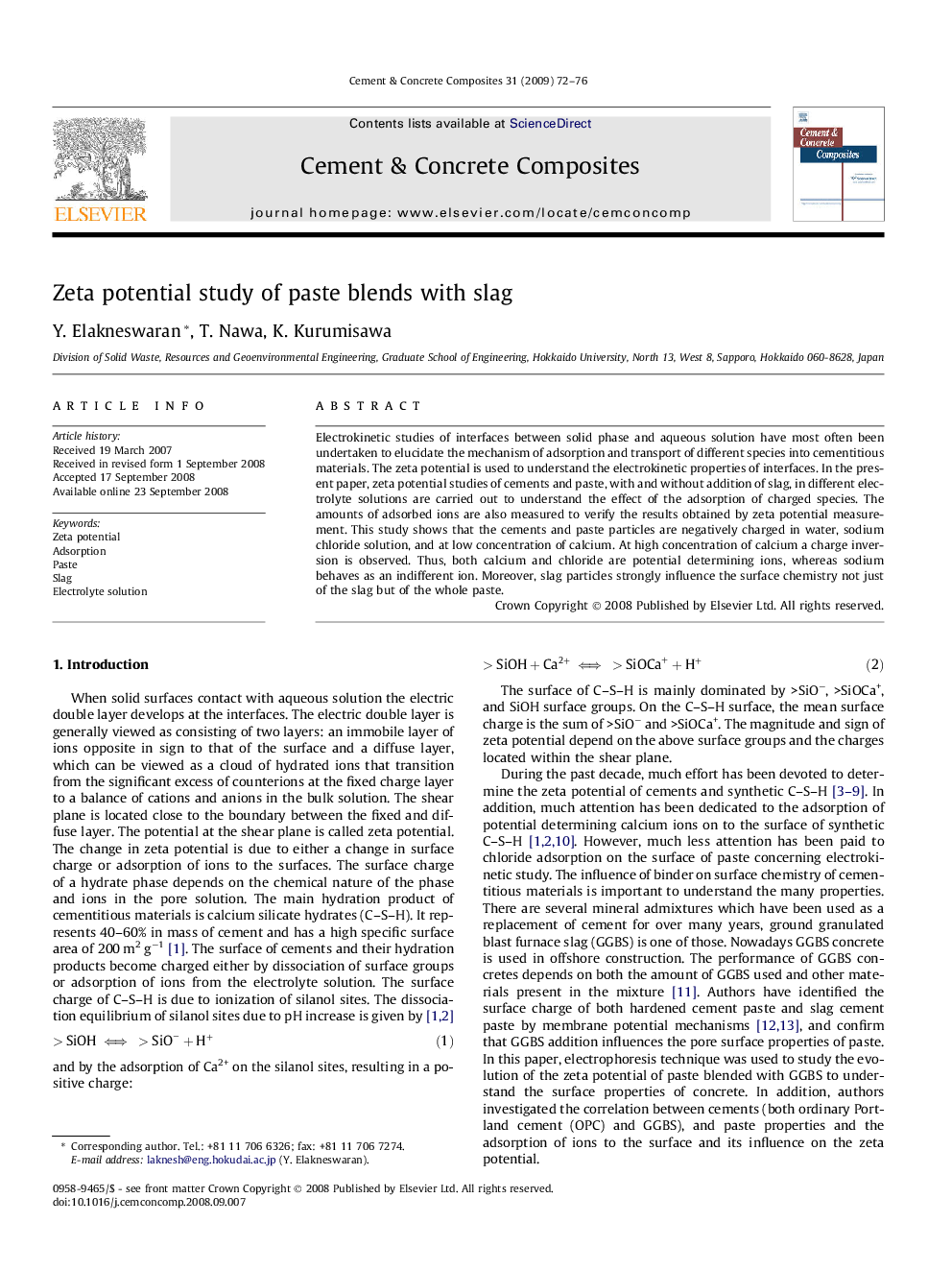| Article ID | Journal | Published Year | Pages | File Type |
|---|---|---|---|---|
| 1455354 | Cement and Concrete Composites | 2009 | 5 Pages |
Electrokinetic studies of interfaces between solid phase and aqueous solution have most often been undertaken to elucidate the mechanism of adsorption and transport of different species into cementitious materials. The zeta potential is used to understand the electrokinetic properties of interfaces. In the present paper, zeta potential studies of cements and paste, with and without addition of slag, in different electrolyte solutions are carried out to understand the effect of the adsorption of charged species. The amounts of adsorbed ions are also measured to verify the results obtained by zeta potential measurement. This study shows that the cements and paste particles are negatively charged in water, sodium chloride solution, and at low concentration of calcium. At high concentration of calcium a charge inversion is observed. Thus, both calcium and chloride are potential determining ions, whereas sodium behaves as an indifferent ion. Moreover, slag particles strongly influence the surface chemistry not just of the slag but of the whole paste.
